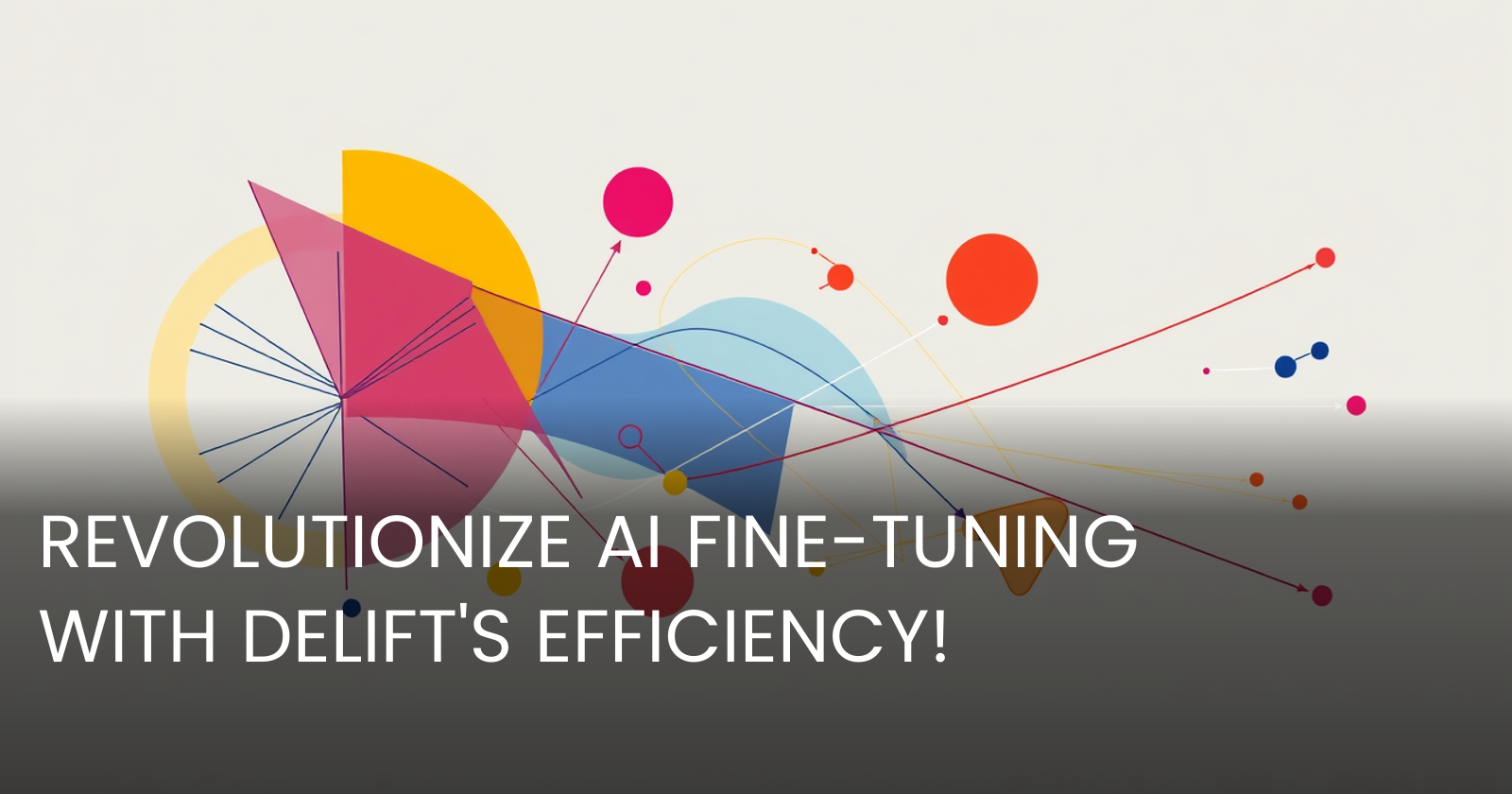Unpacking DELIFT: A Step Towards Efficient Language Model Fine-Tuning
 Gabi Dobocan
Gabi Dobocan
In this blog post, we delve into the intricacies of a groundbreaking scientific paper that introduces DELIFT—an innovative approach for improving the efficiency of large language model (LLM) fine-tuning. If you're interested in how machine learning can be optimized to save both computational resources and man-hours, while maintaining or even improving performance, you've come to the right place. Let's break down the complex jargon and highlight how DELIFT can be a game-changer for businesses across various sectors.

- Arxiv: https://arxiv.org/abs/2411.04425v2
- PDF: https://arxiv.org/pdf/2411.04425v2.pdf
- Authors: KrishnaTeja Killamsetty, Marina Danilevksy, Lucian Popa, Ishika Agarwal
- Published: 2024-11-07
The Main Claims of DELIFT
The paper claims that DELIFT (Data Efficient Language model Instruction Fine-Tuning) is a novel method designed to significantly reduce the data requirement for fine-tuning large language models by up to 70%, without compromising their performance. This is primarily achieved through a unique subset selection process that captures the most informative and diverse data samples, thus minimizing the computational load while retaining task efficacy.
What DELIFT Proposes
DELIFT introduces a new approach emphasizing a pairwise utility metric and submodular optimization techniques. This strategy allows DELIFT to choose data points that are most informative, yet essential for model learning. The utility metric assesses the value of data in enhancing model responses, while submodular functions guide the selection process to maintain dataset integrity during various stages of fine-tuning.
Key Enhancements
- Pairwise Utility Metric: Evaluates how beneficial a single data point is compared to others, thus allowing a prioritization of more informative data.
- Submodular Optimization: Ensures efficient subset selection, essential for stages like instruction tuning, task-specific fine-tuning, and continual learning.
Practical Applications for Businesses
Companies can leverage DELIFT in various ways:
- Product Development: By reducing the data size required for training models effectively, businesses can speed up the development cycle for AI-driven products.
- Cost Reduction: With lower computational requirements, operational costs drop significantly, making it feasible for enterprises of all sizes to leverage large AI models.
- Improved Data Handling: Offers a structured approach to data selection, enabling enhanced performance in resource-constrained environments, like edge computing devices or mobile applications.
Potential Business Ideas
- Customized AI Solutions: Facilitate the creation of more specialized AI solutions in healthcare, finance, and other domains where data is sensitive and expensive.
- Efficient Training Platforms: Development of platforms that offer fine-tuning services using DELIFT's method, providing competitive advantages by offering data-efficient solutions.
Deep Dive into Training and Hardware
Hyperparameters and Training
DELIFT employs a consistent hyperparameter setup to ensure efficacy across models, utilizing specific submodular functions—Facility Location (FL), Facility Location Mutual Information (FLMI), and Facility Location Conditional Gain (FLCG)—depending on the tuning phase.
Hardware Requirements
While the paper highlights that DELIFT is computationally efficient, implying less demand on high-end hardware, extremely large datasets could still pose challenges. Companies must weigh the benefits of its data efficiency against potential hardware investments.
Target Tasks and Datasets
DELIFT has been tested across various tasks and datasets:
- Instruction Tuning: Improved model instruction adherence using selective data management.
- Task-Specific Fine-Tuning: Outperformed full datasets in contexts like question-answering and reasoning tasks—HotpotQA with MMLU noted a performance increase.
- Continual Learning: Enabled efficient integration of new data, demonstrating adaptability in dynamic environments.
State-of-the-Art Comparisons
DELIFT challenges state-of-the-art methods by delivering competitive or superior performance with smaller datasets. It uses baselines such as SelectIT and LESS and shows improvements highlighting its superiority in performance and resource efficiency.
Conclusions and Future Directions
The study concludes that DELIFT is a significant step forward in model fine-tuning by offering reduced data and computational requirements without sacrificing performance. However, it also discusses limitations, such as potential bias in data selection and the need for scalability enhancements. Ongoing research aims at improving bias mitigation and expanding DELIFT applications to multimodal learning.
In essence, DELIFT embodies a promising frontier in machine learning efficiency, suggesting a future where AI can be both powerful and accessible across numerous applications. Companies could find DELIFT's approach invaluable in building more efficient, cost-effective, and scalable AI systems.

Subscribe to my newsletter
Read articles from Gabi Dobocan directly inside your inbox. Subscribe to the newsletter, and don't miss out.
Written by

Gabi Dobocan
Gabi Dobocan
Coder, Founder, Builder. Angelpad & Techstars Alumnus. Forbes 30 Under 30.